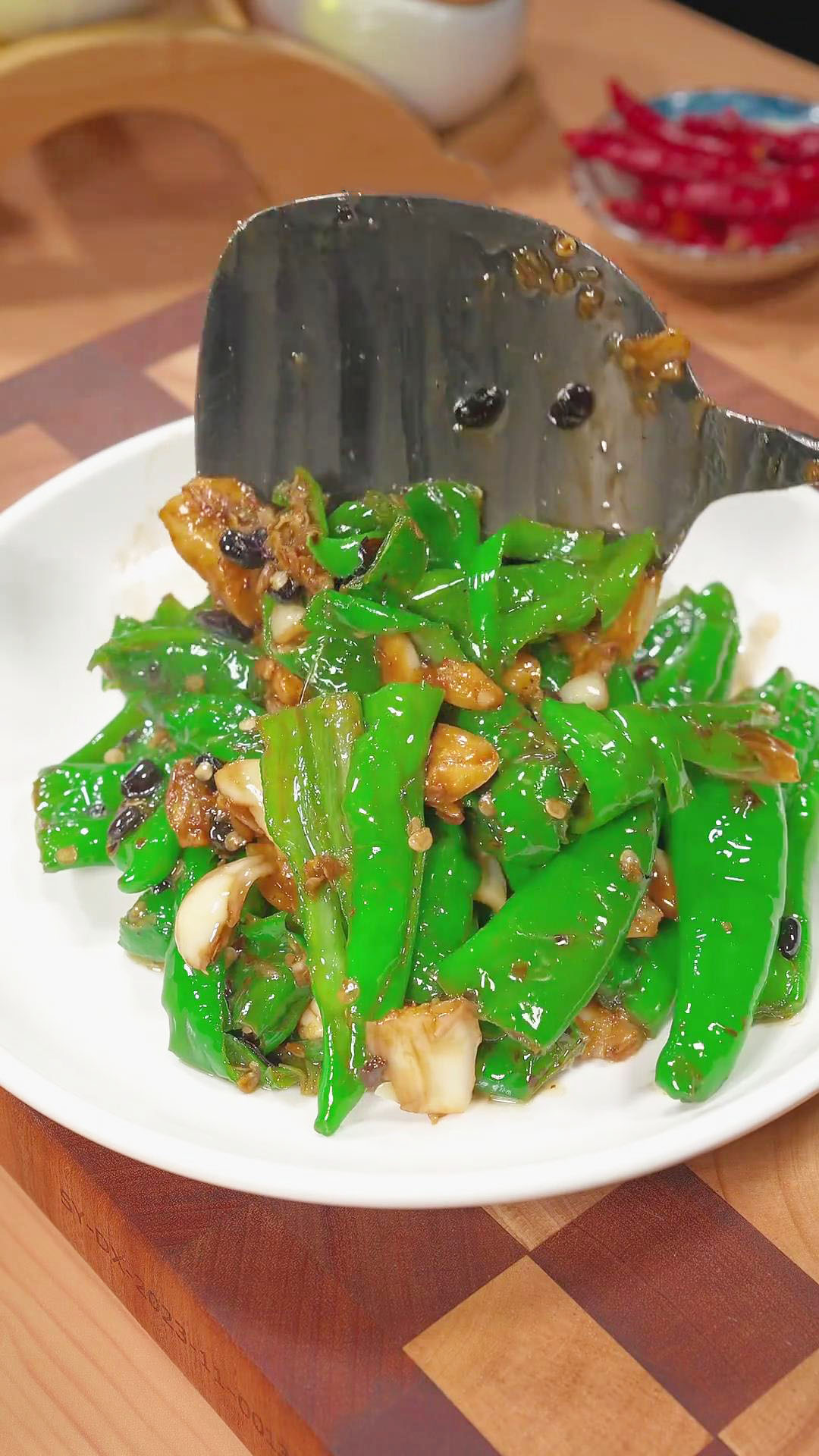This post may contain affiliate links. Please read our disclosure policy.
Chinese sausage, also known as lap cheong, is a versatile ingredient commonly used in a variety of dishes, including Chinese sausage fried rice, clay pot rice, and congee. If you love adding savory meats to your Chinese dishes, you shouldn‘t miss out on making your homemade Chinese sausages. All you need are 5 ingredients, including pork, sugar, salt, baijiu, and light soy sauce.
What Makes Chinese Sausages Different?
Sausages are dried cured meat typically made from seasoned pork meat and fat. It is prepared by air-drying or smoking. There are various types of cured sausages around the world, from pepperoni to salami.
In China, you will have Chinese sausages, also known as lap cheong or lap chong (腊肠). These are usually bought in Asian supermarkets, in the international section of grocery stores, and in online stores like Amazon.
Please note that while both lap yuk (Chinese cured pork belly) and lap cheong (Chinese Sausages) are types of cured meats in Chinese cuisine, they are entirely different.

Making your own Chinese sausage at home is fun and rewarding. You get the assurance of knowing that the ingredients used are fresh, without harmful chemicals and food coloring.
Believe me, once you master the art of making Chinese sausage, you won’t find the need to buy it from the store again. My refrigerator is regularly stocked with Chinese sausages, allowing me to grab one whenever the craving hits.
How To Use Chinese Sausages
It is definitely worth the time and effort to make your own Chinese sausages since you can use them in various recipes. Aside from eating it on its own, you can cook it with these dishes:
- Traditional Chinese Egg Fried Rice (蛋炒饭)
- Dim Sum Classic Chinese Turnip Cake (Lo Bak Go)
- Steamed Chinese Taro Cake (Yam Cake)
- Yang Chow Fried Rice (Yangzhou Fried Rice 扬州炒饭)
- One-Pot Taro Rice (Yam Rice)
- Congee Toppings
- Clay Pot Rice Recipe (Bao Zai Fan)
How Long Do Chinese Sausages Last?
Chinese sausages can be kept in the fridge for weeks and in the freezer for months. You can extend the shelf life as long as it is kept in an airtight container and prepared correctly. The exact length varies for some since some say it can be stored in the fridge for 3 months and in the freezer for 1 year.
If you are not sure how long to store the Chinese sausage, it is best to refer to USDA or U.S. Department of Agriculture guides on food storage. According to USDA, the recommended storage times for dry sausages is up to 6 weeks in the pantry for unopened sausages and up to 3 weeks in the fridge for opened sausages. Just make sure to look out for molds or unpleasant smells before consuming.
Pro Tips And Recommendations
Each ingredient I used for this recipe is crucial for the curing process. So, I don’t recommend omitting any of them for the success of the dried sausage. Here’s what to know about the ingredients:
- 70% lean pork + 30% pork fat: 70% of the pork ingredient is lean pork shoulder and 30% is pork fat. You can also use other fresh pork cuts with 80% meat and 20% fat. I don’t recommend ground pork since you will have to separate the meat from the fat in this recipe. The pork fat is first mixed with sugar, while the lean pork meat is mixed with salt, baijiu, and light soy sauce. The two marinated mixtures are then combined to prepare for the sausage casing.
- Sugar: There are two reasons why sugar is important for cured sausages. First, the sugar will balance out the salty flavors of the meat and soy sauce. Second, sugar helps with the curing process since it is the source of food for the flavor-producing bacteria in the meat. With the reaction with amino acids, it produces its brown color and deep flavors. You can use any type of sweetener, including white sugar, brown sugar, cane sugar, maple syrup, or coconut sugar.
- Salt: Use table salt, kosher salt, or sea salt. Salt helps bring out the flavors and preserve moisture by preventing water loss. Moreover, it is essential in extending the shelf life of the sausages.
- Baijiu (白酒): Baijiu (白酒) is a Chinese alcohol also known as shaojiu. You will need this for flavor and aroma. The sausage will absorb the baijiu for a stronger flavor. Aside from baijiu, you can also use rose wine, rice wine, or dry sherry.
- Light soy sauce: Soy sauce deepens the salty and umami flavors of the sausage. Other alternatives to consider are dark soy sauce, tamari, liquid aminos, coconut aminos, or gluten-free soy sauce. Simply adjust the amount according to taste.
- Optional flavoring ingredients: If you are going for a deeper red color, I recommend a natural way of coloring using red yeast rice powder. You can further customize the flavor of the sausage by adding fish sauce, white pepper or black pepper, Sichuan peppercorn, Chinese Five Spice Powder, garlic, and star anise.
Ingredients And Kitchen Equipment Needed
The special equipment needed are a sausage filling device and a cotton butcher’s twine. Filling sausage casings without a special tool can be challenging. I prefer using a manual sausage filler (sausage stuffer) for a more efficient and quicker process. These handy tools are readily available on platforms like Amazon.
Another special item needed is the sausage casing.
Sausage casings are typically available in butcher shops or on Amazon. These are available in dried and salted casings. That is why the sausage casing is rinsed first to remove the excess salt.
Here’s a complete list of items needed:
Kitchen Equipment
- Manual or machine sausage stuffer (sausage filler)
- Cotton butcher’s twine (cotton rope for tying the sausages)
- Mixing bowls
Ingredients
- 5kg of fresh pork shoulder (70% lean + 30% fat)
- 250g of sugar
- 40g of salt
- 200g of baijiu (白酒) or (rose wine, rice wine, dry sherry)
- 250 of light soy sauce
- 10 meters sausage casing
10 Detailed Steps To Make Chinese Sausages
If it is your first time making sausages, I suggest watching my Instagram or TikTok tutorial video to learn more about the steps. When you are done making it, let us know how it went by leaving a comment below. Remember to tag me @kitchenmisadventures to show your finished Chinese sausages.
- Cut the meat into small pieces, around 0.5cm in length, 0.5cm in width, and 0.3cm in thickness. You don’t need to chop it as finely as you would for filling dumplings or baozi. Place the lean pork and pork fat in separate bowls. If you want to make this step faster, you can blend the meat in a food processor.
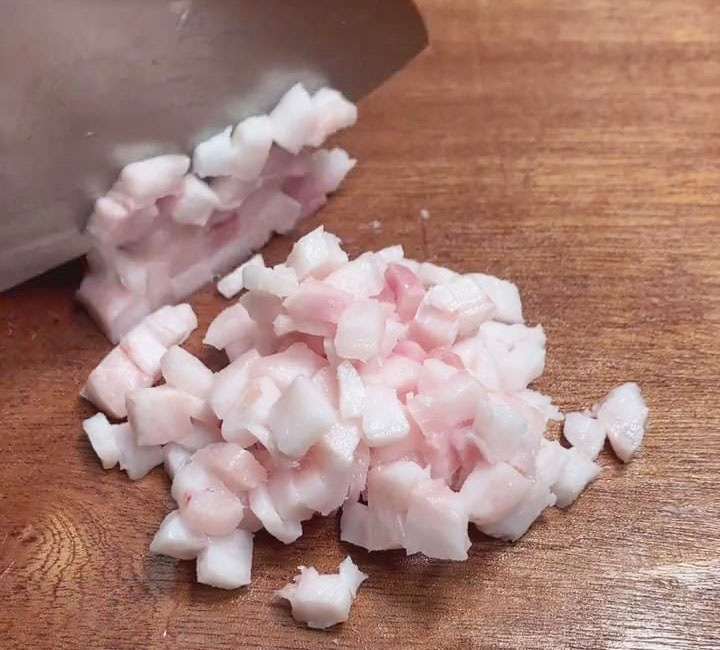
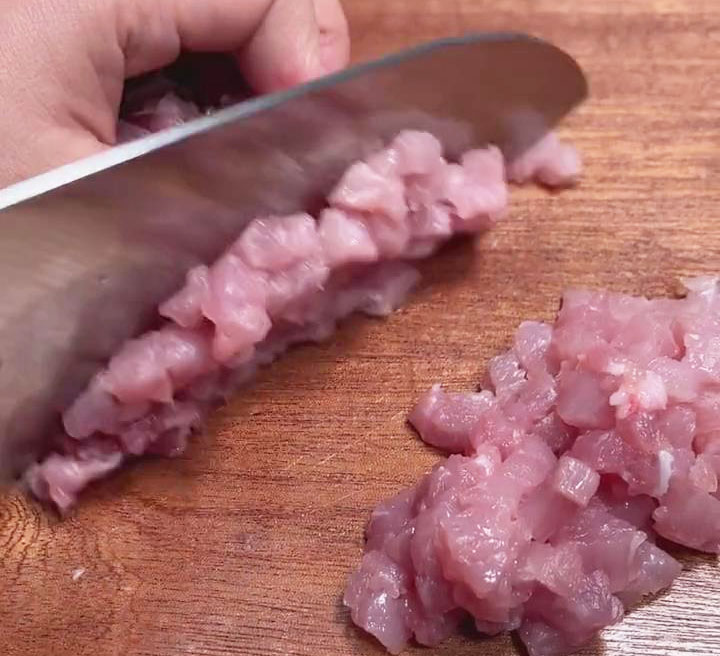
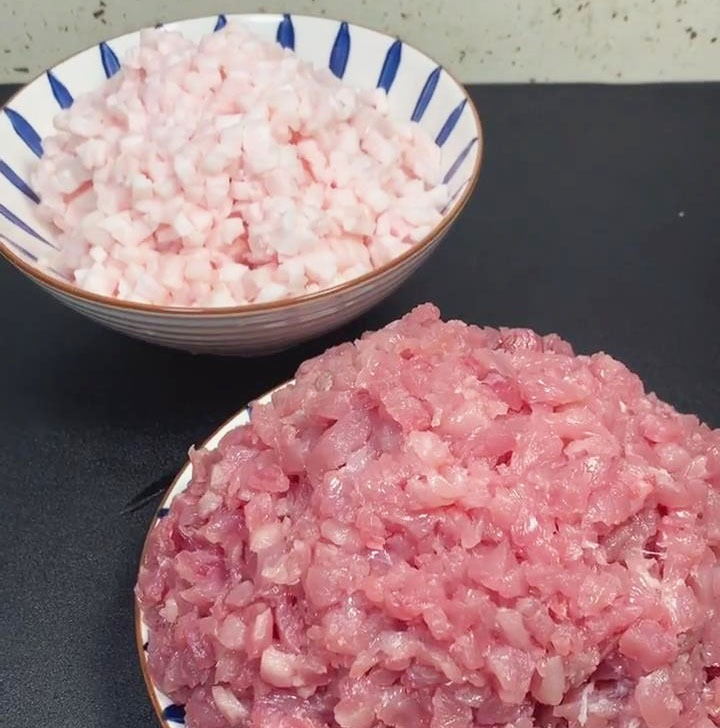
- In a bowl, combine the pork fat with sugar and mix thoroughly. Allow it to marinate for approximately 6 hours.
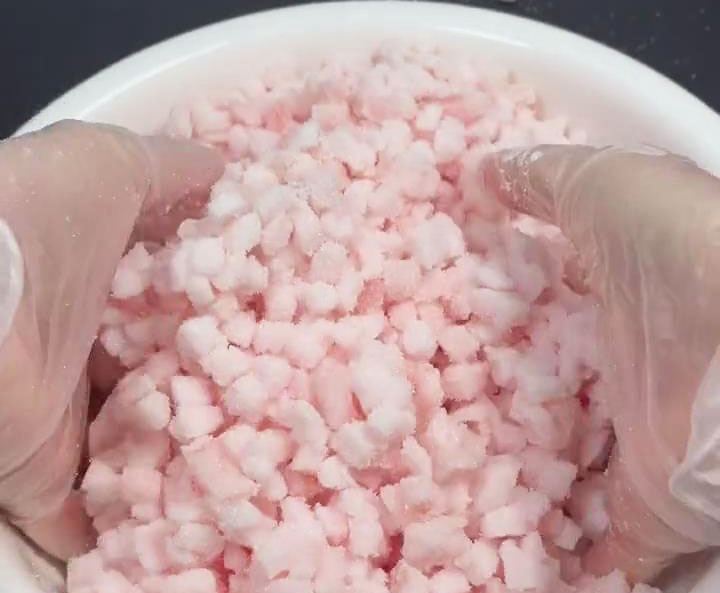
- In a separate bowl, add salt, baijiu, and light soy sauce to the lean meat. Stir until fully absorbed and let it marinate for 6 hours.
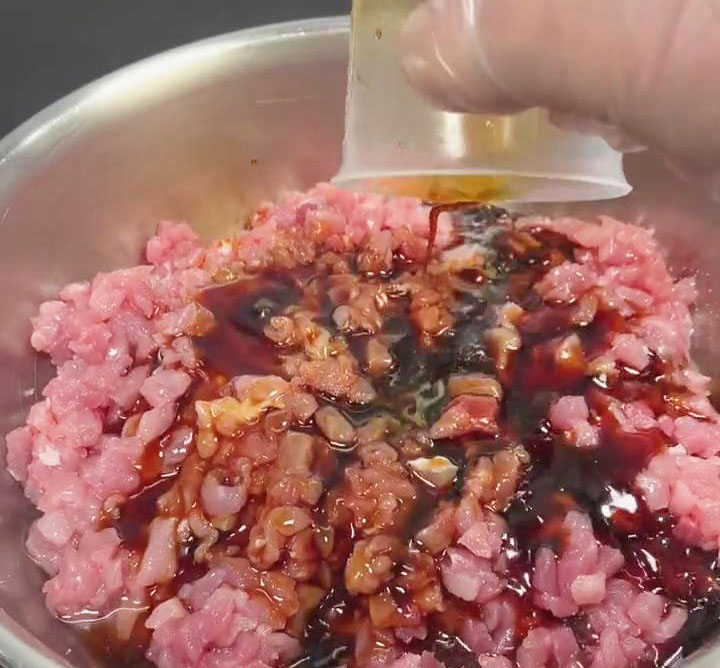
- Prepare the sausage casing. Wash the salt off the sausage casing and soak it in water for 10 minutes.
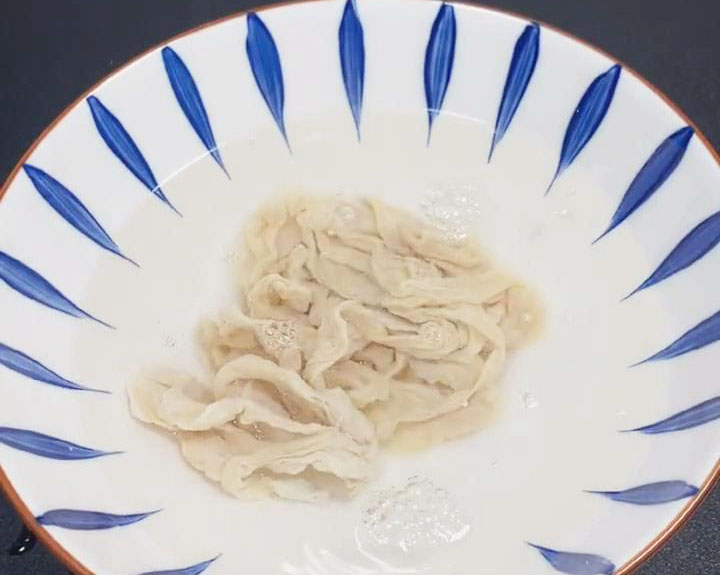
- Combine the marinated fat and lean meat thoroughly.
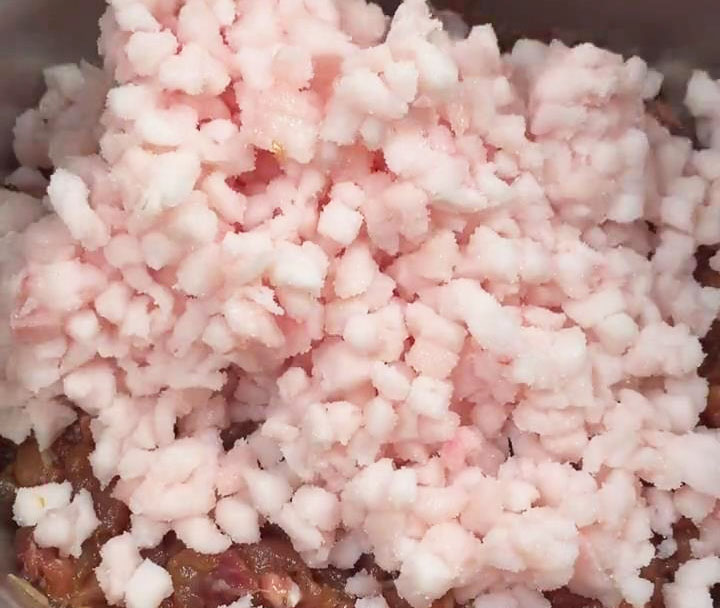

- Knot one end of the sausage casing.
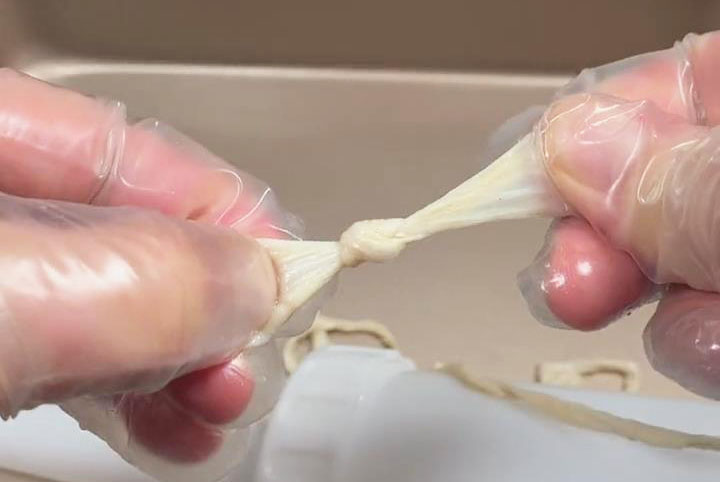
- Place the other end of the sausage casing onto the sausage stuffer, fill the Sausage stuffer with the meat mixture, and cover with the lid. Use the sausage stuffer to fill the sausage casing with the meat mixture and tie the sausages with a cotton butcher’s twine according to your preferred length.
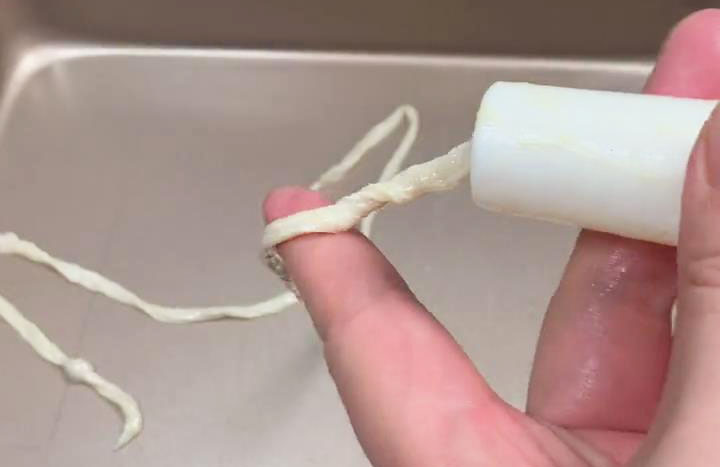

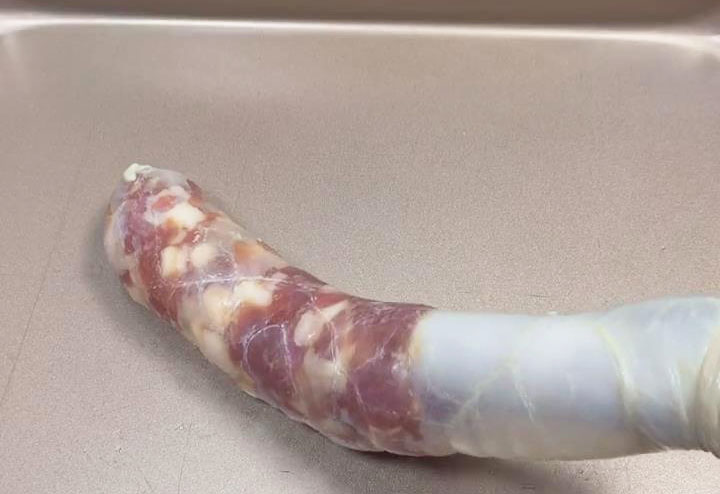
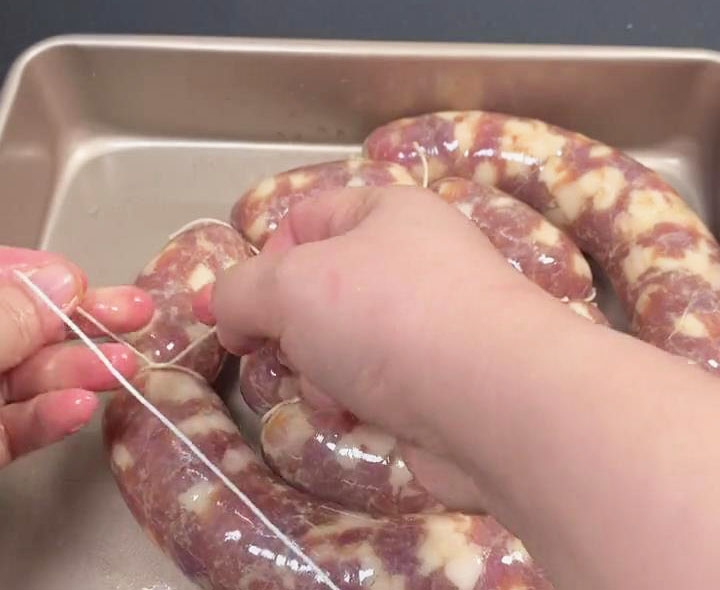
- Boil the sausages in hot water for a few seconds as an additional step. The purpose is to clean the sausages, but you can choose to omit this process.

- Let the sausages dry in the sun for about a week. Check if the sausage feels dry and firm. Once it is dry, you can cut the cotton butcher’s twine and sausage pieces.
- Steam or stir-fry the sausages before serving.

How To Make Chinese Sausage
Ingredients
- 5 kg fresh pork shoulder 70% lean + 30% fat
- 250 g sugar
- 40 g salt
- 200 g baijiu 白酒 or (rose wine, rice wine, dry sherry)
- 250 light soy sauce
- 10 meters sausage casing
Instructions
- Cut the meat into small pieces, around 0.5cm in length, 0.5cm in width, and 0.3cm in thickness. You don't need to chop it as finely as you would for filling dumplings or baozi. Place the lean pork and pork fat in separate bowls. If you want to make this step faster, you can blend the meat in a food processor.
- In a bowl, combine the pork fat with sugar and mix thoroughly. Allow it to pickle for approximately 6 hours.
- In a separate bowl, add salt, baijiu, and light soy sauce to the lean meat. Stir until fully absorbed and let it marinate for 6 hours.
- Prepare the sausage casing. Wash the salt off the sausage casing and soak it in water for 10 minutes.
- Combine the marinated fat and lean meat thoroughly.
- Knot one end of the sausage casing.
- Place the other end of the sausage casing onto the sausage stuffer, fill the Sausage stuffer with the meat mixture, and cover with the lid. Use the sausage stuffer to fill the sausage casing with the meat mixture and tie the sausages with a cotton butcher's twine according to your preferred length.
- Boil the sausages in hot water for a few seconds as an additional step. The purpose is to clean the sausages, but you can choose to omit this process.
- Let the sausages dry in the sun for about a week. Check if the sausage feels dry and firm. Once it is dry, you can cut the cotton butcher's twine and sausage pieces.


